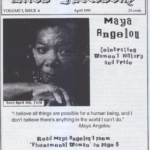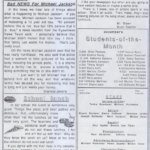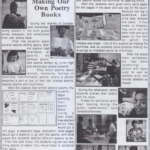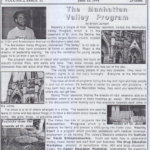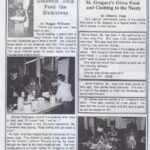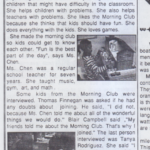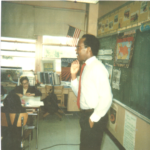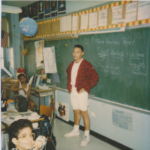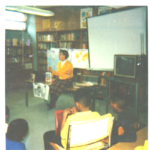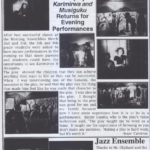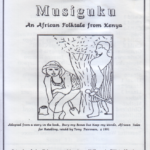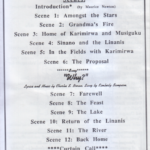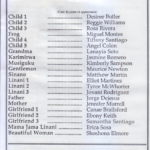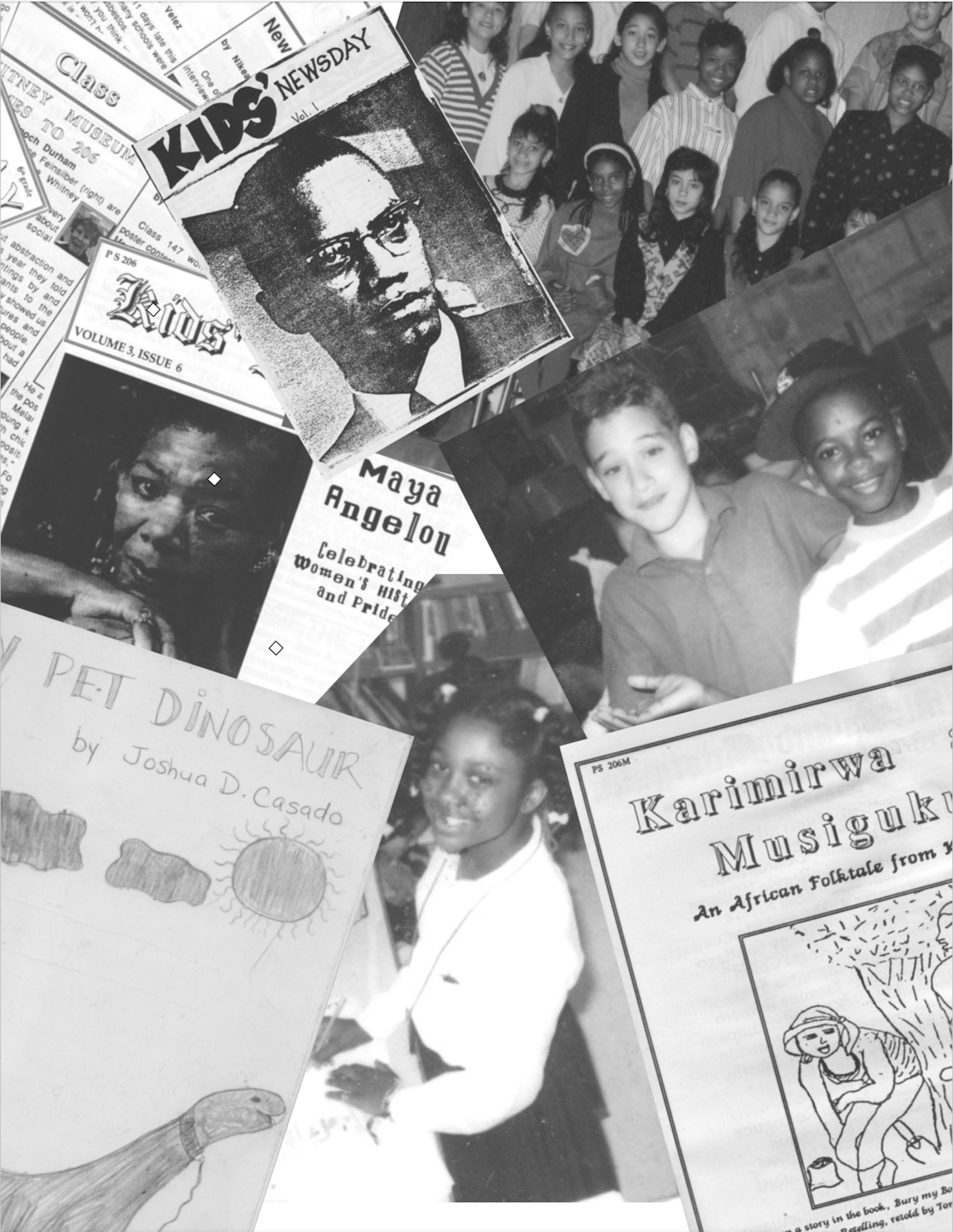
Deepening Engagement through Experiential Learning
In the ever-evolving landscape of education, experiential learning stands out as a transformative approach that bridges the gap between theoretical knowledge and real-world application. This educational philosophy goes beyond the conventional confines of classroom teaching, offering students hands-on, immersive experiences that foster deeper understanding and engagement.
At its core, experiential learning is about learning by doing. It’s an approach that encourages students to engage directly with the material, be it through projects, experiments, or real-world problem-solving. This method aligns with the famous Chinese proverb: “Tell me, I forget. Show me, I remember. Involve me, I understand.”
Building on the foundation of ‘learning by doing,’ experiential learning further enriches education by seamlessly integrating practical experiences with academic concepts. This dynamic approach fosters deeper student engagement and prepares them for the practical challenges of the real world.
Benefits of Experiential Learning:
- Enhanced Engagement: By actively participating in their learning process, students become more invested and interested in the subject matter.
- Real-World Skills: Experiential learning equips students with practical skills that are relevant in the real world, bridging the gap between theory and practice.
- Critical Thinking and Problem-Solving: This approach encourages students to think critically, analyze situations, and come up with creative solutions.
- Personalized Learning: Each student’s experience is unique, allowing for a more personalized and meaningful learning journey.
- Building Confidence: By tackling real-life challenges, students build confidence in their abilities to handle complex situations.
In my experience as an educator in East Harlem, I integrated experiential learning through innovative practices such as assigning student roles like line monitors, class librarians, and various organizers. These roles fostered a sense of responsibility, collaboration, and ownership among students, making the classroom a microcosm of the broader community they would engage with in the future.
Our goal as educators is to equip students not only with knowledge but also with the skills, adaptability, and confidence to thrive in an ever-changing world. Experiential learning is a vital tool in this endeavor, shaping learners who are ready to embrace the future with assurance and competence.
Bridging Traditional and Digital Communication: The Power of Letters and Emails
 In a world where digital communication is predominant, the traditional art of letter writing, complemented by the convenience of emails, presents a unique blend of old and new for student learning. This approach in the classroom opens avenues for both thoughtful reflection and practical, cost-effective communication.
In a world where digital communication is predominant, the traditional art of letter writing, complemented by the convenience of emails, presents a unique blend of old and new for student learning. This approach in the classroom opens avenues for both thoughtful reflection and practical, cost-effective communication.
Why Letter Writing and Emails Matter:
- Versatile Writing Skills: Engaging in both letter writing and email communication helps students develop a range of writing skills, from formal structure to concise digital etiquette.
- Expression Across Mediums: Whether through ink or pixels, these forms of communication offer students avenues for self-expression and sharing perspectives.
- Real-World Connections: Writing to diverse audiences, from personal contacts to professionals and public figures, broadens students’ understanding of the world.
- Cost-Effective Learning: Recognizing budget constraints, incorporating email communication allows for frequent and affordable student outreach.
Implementing a Combined Communication Program:
- Choosing the Medium: Allow students to choose between writing physical letters and sending emails, considering factors like the recipient, the message’s nature, and practicality.
- Diverse Recipients: Encourage students to reach out to various people, including peers, family, community members, and professionals, using the appropriate medium.
- Curriculum Integration: Use both letters and emails to supplement subjects like history, science, and literature, providing a practical context for learning.
- Feedback and Editing: Emphasize the importance of drafting, revising, and proofreading in both formats to ensure clear and effective communication.
- Celebrating Responses: Share and discuss the responses received, whether through mail or email, to highlight the impact and value of students’ efforts.
In East Harlem, I initially covered postage for traditional letters out of my pocket. However, with the evolution of technology and to manage costs, email could be used today. This dual approach can save on expenses and caters to the diverse preferences and learning styles of students. It was a delight to see the excitement in students whether they were stamping an envelope or hitting the send button on an email.
Combining the timeless practice of letter writing with the modern efficiency of emails creates a rich, multifaceted learning experience. It equips students with varied communication skills essential in today’s world, fostering both creativity and practicality. By embracing both mediums, we prepare students to navigate and connect in a diverse and ever-changing communication landscape.
Building a Vibrant School Community: A Comprehensive Guide to School Newsletters and Blogs
Creating a school newsletter or blog is more than just a communication tool; it’s a dynamic platform for student expression, community building, and real-world skill development. Drawing inspiration from my experience at P.S. 206, this guide will take you through the process of creating an engaging and impactful school publication.
Step 1: Planning and Conceptualization
- Define the Purpose: Determine the objectives, whether it’s to inform, engage, or celebrate school achievements. Consider incorporating various activities like class trips, creative writing, and educational projects.
- Choose the Format: Decide between a print newsletter or a digital blog, leveraging current technologies for design and distribution.
Step 2: Assembling a Team
- Student Involvement: Empower students to take on roles as writers, editors, photographers, and designers, fostering a sense of ownership and leadership.
- Faculty Coordination: Engage faculty members for support and integrate the newsletter/blog with broader curriculum activities.
Step 3: Content Creation
- Diverse Content: Encourage a variety of content, including news articles, interviews, student work, event coverage, and even local community stories.
- Editorial Calendar: Develop a calendar to plan and schedule diverse content, ensuring consistency in publication.
- One of our 1st issues
- Front page of another
- Editorials. Letters. Staff.
- Class activities
- After school trips
- Community service
- Morning club
Step 4: Design and Layout
- Aesthetics and User-Friendly Design: Choose a clear layout that reflects the school’s identity. For blogs, ensure easy navigation on various devices.
- Innovative Use of Technology: Utilize modern software for design and layout, drawing inspiration from early experiences with groundbreaking technology.
Step 5: Writing and Editing
- Quality Content: Promote clear, engaging writing tailored to your audience. Encourage diverse viewpoints and creative expression.
- Editing Process: Implement a rigorous editing process, teaching students the importance of accuracy and clarity.
Step 6: Promotion, Distribution, and Monetization
- Reaching the Audience: Use school announcements, emails, social media, and community outreach for promotion.
- Fundraising and Sales: Explore selling the newsletter or seeking sponsorships to cover production costs, as done in the past.
Step 7: Community and Career Connections
- Community Involvement: Encourage students to engage with the local community, including businesses and organizations, for content and support.
- Career Development: Highlight how skills developed in the newsletter/blog project can lead to future career opportunities.
Step 8: Maintenance, Evaluation, and Peer Training
- Regular Updates and Feedback Loop: Keep content fresh and solicit feedback for continuous improvement.
- Peer-to-Peer Learning: Establish a mentorship system where experienced students guide newcomers.
A school newsletter or blog is an invaluable educational project that extends beyond mere information dissemination. It’s a platform for skill development, community engagement, and student empowerment. Drawing from the rich experience at P.S. 206, this guide aims to inspire educators to launch and nurture a successful school publication, laying a foundation for student success inside and outside the classroom.
Writing Workshops Guide
Purpose: Enhance students’ writing skills through interactive and collaborative sessions. Implementation:
- Mini-Lessons: Start with brief lessons on specific writing aspects like structure, style, or grammar.
- Group Work: Encourage students to work in small groups, brainstorming and sharing ideas.
- Peer Review: Facilitate peer review sessions where students give and receive constructive feedback.
- Diverse Writing Styles: Cover various writing styles, from creative to expository writing, catering to different interests and strengths.
Journaling in the Classroom
Purpose: Foster personal expression and reflective thinking. Implementation:
- Daily Writing: Allocate time for students to write in their journals daily, reflecting on their experiences or thoughts.
- Prompts and Freewriting: Offer writing prompts for guidance or allow freewriting for creative expression.
- Teacher Participation: Lead by example; maintain your own journal and share excerpts to motivate students.
- Review and Reflection: Periodically review journal entries to understand students’ progress and concerns.
Exit Slips for Student Feedback
Purpose: Collect valuable feedback and insights into students’ learning experiences, aiding in tailoring future lessons to their needs.
Implementation:
- Selective Use: Utilize exit slips at the end of significant classes, following guest speaker sessions, or as a weekly summary to capture students’ learning and challenges.
- Focused Questions: Develop specific questions that encourage students to reflect on key learnings, understandings, and areas where they need more support.
- Periodic Review: Regularly assess these exit slips to identify common difficulties or achievements, using this information to guide instructional planning and address student needs effectively.
Exit slips serve as a critical communication tool between students and teachers, providing insights that might not emerge during regular class interactions. They offer a structured yet flexible way for students to express their thoughts, fostering a responsive and adaptive learning environment.
Book Making Project
Purpose: Encourage creativity and a love for literature. Implementation:
- Story Creation: Guide students in writing and illustrating their own stories.
- Book Construction: Teach students how to bind and create physical copies of their books.
- Publishing Parties: Celebrate the completion of books with classroom events, sharing and reading the stories.
- Library Integration: Add student-created books to the class library, fostering a sense of accomplishment and contribution.
Incorporating Guest Speakers into the Classroom
Inviting guest speakers into the classroom is a powerful way to enhance learning, connect students to the real world, and inspire curiosity beyond the traditional curriculum. Based on my experiences at P.S. 206, this section provides strategies for effectively incorporating guest speakers into educational settings.
Why Guest Speakers Matter:
- Real-World Connections: Speakers bring practical experience and knowledge, bridging the gap between classroom learning and real-world application.
- Diverse Perspectives: They introduce students to diverse viewpoints and life experiences, fostering a broader understanding of the world.
- Inspiration and Aspiration: Guest speakers can inspire students, igniting new interests and aspirations.
Finding and Inviting Guest Speakers:
- Identifying Potential Speakers: Look for experts and professionals in fields relevant to your curriculum or student interests. Consider local business leaders, authors, artists, or community activists.
- Using Your Network: Leverage your personal and professional networks, including fellow educators, parents, and community members, to find potential speakers.
- Crafting the Invitation: When reaching out, be clear about your expectations, the topic, and how their expertise aligns with your educational goals. Personalize your invitation to show genuine interest in their work.
Preparing for the Visit:
- Student Preparation: Prior to the visit, prepare students by discussing the speaker’s background and the relevance of their work. Encourage students to research and come up with questions.
- Logistical Planning: Arrange the space for the visit, ensuring appropriate seating, audio/visual equipment, and a welcoming atmosphere.
- Role of the Speaker: Communicate with the speaker about the class profile, duration of the talk, and any specific focus or interactive elements they can include.
During the Visit:
- Facilitating the Session: Introduce the speaker with enthusiasm. Facilitate the session by moderating the discussion and ensuring student engagement.
- Interactive Elements: Encourage interactive elements such as Q&A sessions, demonstrations, or small group discussions to make the experience more engaging.
Post-Visit Activities:
- Reflection and Discussion: After the visit, hold a class discussion or ask students to write reflections on what they learned and how it connects to their studies.
- Thank You Notes: Encourage students to write thank you notes to the speaker, expressing what they found insightful or inspiring.
At P.S. 206, we regularly invited guest speakers, including authors, athletes, and professionals, who shared their experiences and knowledge. This not only enlivened our curriculum but also allowed students to see the practical application of their studies. We coordinated these visits with ongoing projects and themes, making the learning experience cohesive and comprehensive.
Incorporating guest speakers into the classroom is a dynamic way to enrich education. It brings a sense of excitement and real-world relevance to learning, encouraging students to explore new areas of interest and expand their horizons. With careful planning and preparation, guest speakers can significantly enhance the educational experience, leaving a lasting impact on students.
Annual Productions: Enriching Education through Theatrical Storytelling
Transforming folktales into school productions is a deeply enriching educational experience, blending storytelling, performing arts, and cultural exploration. Drawing from the experience of adapting African folktales at P.S. 206, this guide offers a framework that can be adapted to any folktale, enriching students’ learning experiences.
Choosing and Adapting Folktales:
- Research and Selection: Start by exploring a wide array of folktales, engaging students in the selection process. Choose tales that are culturally enriching and align with your educational objectives.
- Adaptation for the Stage: Work with students to adapt the tale into a script, focusing on capturing the essence of the story while making it suitable for a stage performance.
Integrating Arts and Culture:
- Music and Dance: Integrate culturally appropriate music and dance to enhance the narrative and provide a deeper cultural context.
- Set and Costume Design: Involve art classes in creating sets and costumes that reflect the story’s cultural background, encouraging creativity and resourcefulness.
Casting and Rehearsals:
- Inclusive Casting Process: Ensure every student has an opportunity to participate, whether in acting, music, dance, or production roles.
- Comprehensive Rehearsals: Balance rehearsals between acting, music, and dance. Incorporate regular feedback sessions to help students refine their performances.
Performance and Presentation:
- Engaging the Community: Showcase the production to the wider community, inviting parents, local dignitaries, and media to attend.
- Fundraising and Sustainability: Consider methods to make the production self-sustaining, like ticket sales or community sponsorships.
Post-Production Activities:
- Reflection and Learning: Engage students in post-production discussions to reflect on their experiences and the skills they developed.
- Recognition and Celebration: Acknowledge the efforts and achievements of all participants, celebrating the collaborative spirit of the production.
Expanding the Concept: While the guide draws from the experience of staging African folktales, the principles and steps can be adapted for any cultural or thematic stories. The emphasis should always be on storytelling, cultural appreciation, and student involvement in various aspects of the production.
Annual school productions based on folktales are not just about the final performance; they are a journey of learning, creativity, and cultural exploration. This guide provides a roadmap for educators to create a dynamic and educational theater experience that extends well beyond the confines of traditional classroom learning.
After-School Trips and Their Educational Value
After-school trips can significantly enhance the educational experience by providing students with real-world exposure and opportunities to apply classroom learning. Drawing from my experiences at P.S. 206, this guide will cover how to plan and execute these trips effectively.
Understanding the Educational Benefits:
- Real-World Learning: Trips offer practical learning experiences, helping students understand and connect with the world around them.
- Building Relationships: These excursions strengthen the bond between teachers and students and among students themselves.
- Personal Growth: Students learn valuable life skills such as adaptability, patience, and problem-solving.
Planning the Trip:
- Selecting Destinations: Choose destinations that complement the curriculum and spark student interest, like historical sites, museums, or cultural landmarks.
- Educational Objectives: Define clear learning goals for each trip. For example, if visiting a historical site, prepare materials that tie in with the history lessons being taught in class.
Parental Communication and Permissions:
- Permission Slips and Briefings: Ensure all necessary permissions are secured from parents or guardians. Provide detailed information about the trip, including its educational value.
- Open Communication: Maintain open lines of communication with parents, addressing any concerns and emphasizing the trip’s safety and educational benefits.
Ensuring Safety and Logistics:
- Safety Measures: Prioritize student safety by adhering to school policies, having emergency contact information, and ensuring adequate adult supervision.
- Transportation and Timing: Arrange for safe and reliable transportation. Plan the trip’s timing to minimize disruption to the regular school schedule.
Making the Trip Educational:
- Pre-Trip Preparation: Prepare students by discussing what they will see and learn. This preparation can include brief lessons or activities related to the trip’s theme.
- Engagement During the Trip: Encourage students to ask questions, take notes, or even lead parts of the tour, fostering active participation and leadership.
- Post-Trip Reflection: After the trip, conduct discussions or projects where students can reflect on and share their experiences and learning.
Building Trust and Confidence:
- Trust in the Educator: Foster a sense of trust with students and parents by consistently demonstrating commitment to students’ well-being and education.
- Confidence Building: Use these trips as opportunities for students to explore new environments, challenge themselves, and build confidence.
After-school trips are a valuable extension of classroom learning, offering diverse and enriching experiences that contribute significantly to student development. By carefully planning and executing these trips with a focus on safety, educational value, and student engagement, educators can provide meaningful and memorable learning experiences.
Incorporating Technology and Digital Media in Experiential Learning
Engaging Students in Civic Life
Creating a Classroom Community
Concise Guide: Fostering Community and Responsibility in the Classroom
1. Importance of Classroom Community:
- Purpose: Builds a supportive, inclusive environment where students feel valued and responsible.
- Benefits: Enhances cooperation, respect, and a sense of belonging. Encourages self-discipline and accountability.
2. Assigning Student Roles:
- Examples: Roles like class librarian, trash monitor, and mailbox organizer.
- Implementation: Rotate roles to give each student a chance to contribute and learn different responsibilities.
3. Classroom Meetings:
- Activity: Regular meetings where students can voice opinions, share achievements, and discuss class matters.
- Purpose: Strengthens communication skills and democratic participation.
4. Collaborative Rules and Expectations:
- Activity: Involve students in setting class rules and expectations at the beginning of the school year.
- Benefits: Increases buy-in and adherence to class norms.
5. Group Projects and Teamwork:
- Activity: Encourage group projects that require collaboration and role distribution within teams.
- Integration: Can be linked to any subject, enhancing content learning and social skills.
6. Celebrating Diversity and Individuality:
- Activity: Activities that allow students to share and celebrate their cultural backgrounds and interests.
- Purpose: Promotes understanding and respect for diversity within the classroom community.
Creating a sense of community and responsibility in the classroom is key to a positive and productive learning environment. By assigning roles, encouraging open communication, and celebrating diversity, educators can foster a cohesive and supportive classroom culture.
Reflection and Adaptation in Teaching
Brief Guide: Embracing Evolution in Teaching Practices
1. The Value of Reflection:
- Purpose: Enables teachers to assess and improve their teaching strategies.
- Benefit: Leads to enhanced teaching effectiveness and student learning outcomes.
2. Adapting New Methods:
- Approach: Stay open to new ideas and teaching techniques, integrating them into existing practices.
- Benefit: Keeps teaching methods dynamic and relevant, meeting diverse student needs.
3. Responsiveness to Students:
- Key Aspect: Regularly assess and respond to the changing needs and feedback of students.
- Outcome: Creates a more engaging and effective learning environment.
4. Personal Evolution in Teaching:
- Example: My teaching style evolved to incorporate more experiential learning, adapting to student interests and contemporary educational trends.
- Lesson: Flexibility and adaptation are crucial for staying relevant and impactful as an educator.
Continuous reflection and adaptation are essential for effective teaching. Embracing change and being responsive to student needs are key to developing and maintaining successful educational practices.
Resources
Books:
- “Experience and Education” by John Dewey: A foundational text on the philosophy of education and experiential learning.
- “Teaching for Experiential Learning: Five Approaches That Work” by Scott D. Wurdinger and Julie A. Carlson: Offers practical strategies for implementing experiential learning in various educational settings.
- “The Power of Experiential Learning” by Colin Beard and John P. Wilson: A guide to the theory and practice of experiential learning in different contexts.
Websites:
- Edutopia (edutopia.org): Provides a wealth of resources on experiential learning and innovative teaching practices.
- Association for Experiential Education (aeenetwork.org): Offers resources, professional development, and a community for educators interested in experiential education.
- Kolb’s Experiential Learning Theory (simplypsychology.org): An overview of David Kolb’s theory, a fundamental concept in experiential learning.
Articles and Journals:
- “Journal of Experiential Education”: A peer-reviewed, professional journal that explores experiential education in various settings.
- “Integrating Experiential Learning in Higher Education” by Patrick Blessinger and John M. Carfora (in University World News): Discusses the integration of experiential learning in higher education settings.
Online Courses and Workshops:
- Coursera and edX: Offer various online courses on experiential learning and innovative teaching techniques.
- Professional Development Workshops: Many educational institutions offer workshops on experiential learning methods. Check local universities or educational organizations for availability.
For additional resources that complement the techniques and experiences shared in this blog, be sure to visit our dedicated resource page. This page mirrors the valuable resources found in the book and offers a broader spectrum of tools and insights for enhancing your experiential learning journey.
Discussion Topics:
-
- Integration of Digital and Traditional Methods in Education: Discuss the balance and synergy between traditional teaching methods and modern digital tools. How do digital platforms like blogging and social media complement traditional classroom activities like letter writing?
- Empowering Students through Role Assignments and Civic Engagement: Reflect on the impact of assigning student roles and engaging in civic activities, such as writing letters to city officials. How do these practices foster a sense of responsibility, community awareness, and active citizenship in students?
- The Educational Value of Arts and Real-World Experiences: Explore the role of arts, such as school productions and music, alongside real-world learning experiences like after-school trips. How do these activities enhance students’ cultural understanding, personal growth, and practical application of classroom learning?
- Guest Speakers and Community Involvement in Education: Discuss the influence of guest speakers and community involvement on broadening students’ perspectives. How do these interactions connect classroom learning with real-world experiences and career opportunities?
- Building Classroom Community and Inclusivity: Reflect on the strategies for creating a supportive and inclusive classroom environment. How do activities like group projects and celebrating diversity contribute to a positive learning atmosphere?
- Reflective Teaching and Adapting to Changing Educational Needs: Consider the importance of reflective teaching practices and adapting to students’ evolving needs and contemporary educational trends. How can educators remain effective and responsive in a dynamic educational landscape?
- Role of Experiential Learning in Developing Critical Thinking and Problem-Solving Skills: Explore how experiential learning activities, such as participatory budgeting projects and interactive learning with educational apps, develop critical thinking and problem-solving skills in students.
- Leveraging Resources for Enhanced Learning: Discuss the significance of utilizing diverse educational resources, including literature, websites, and professional development, for enriching experiential learning practices. How can educators effectively incorporate these resources into their teaching?

